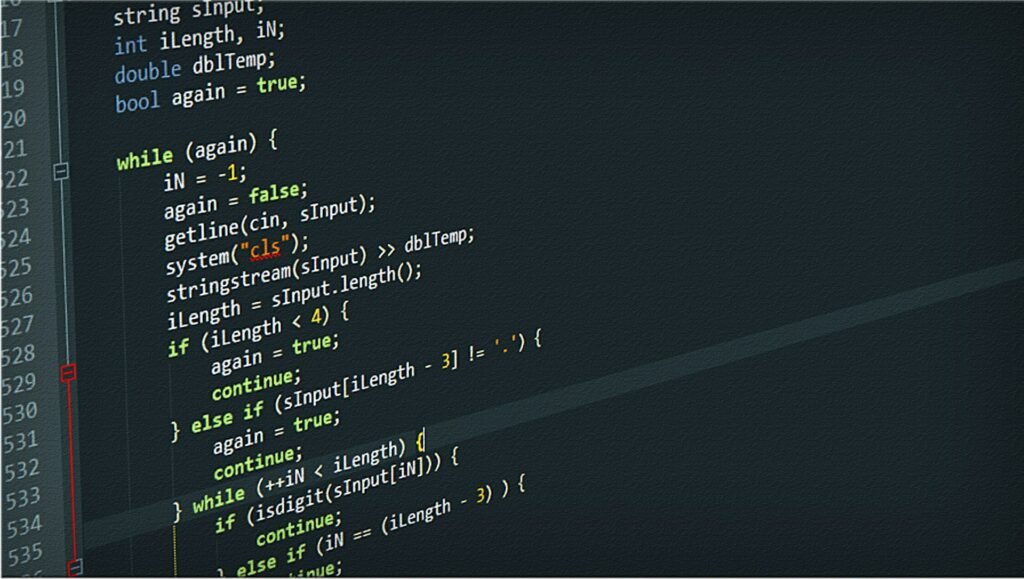What is objective c
A graphical programming language is Objective-C. It is often used to create programs for Apple’s operating systems, including ios and Apple macos. Since the late 1980s, Apple uses Objective C programming, which was first created in the early 1980s.

An object-oriented programming language is Objective-C. It is a whole new programming language and an advanced extension of C programming. Features like dynamic binding, message forwarding, and runtime reflection are available in Objective C. More flexible and dynamic programming development is possible with Objective C. You may also use a number of built-in data types and classes that program data type characteristics when you program in Objective-C. Like the program array features nsstring and nsarray, which are often used in Apple’s programming framework.
Although Objective-C used to be a significant primary language for apple development. There have been significant changes made since then. This is a different programming language that Apple created. Although some developers still prefer it for particular software development occupations, Objective-C continues to be used in some dated frameworks and apps.
What is in objective-c
The Apple Mac operating system uses the object-oriented programming language Objective-C. It uses the C programming language exclusively. It has all of the C programming capabilities. Program variables, arrays, and functions, for example, are similar to those in C programming, but Objective C also adds many additional capabilities. In which object-oriented programming is specialized. Features include things like classes, objects, messages, etc.
The programming language Objective-C for Apple has certain important features.
- Classes – C programs written in Objective-C may define classes. Which are templates for classes used to create objects. Classes in Objective C can have both methods and properties, or attributes and behaviors.
- Objects – You build program objects in Objective-C from classes. As instances of a class, objects are capable of storing values for the class’s defined attributes.
- Messaging – In Objective-C, you send messages to objects rather than calling methods like you would in C. An object replies when you send it a message by calling the proper method.
- Dynamic Binding – The method to be performed in response to a message is decided at runtime based on the type of the object receiving the message. Objective-C fully supports dynamic binding.
- Categories – Using a feature called a category, Objective-C enables you to add methods to a class without having to subclass it.
- Protocols – Protocols is a feature of Objective-C. That are comparable to interfaces in other languages. A class can implement a set of methods specified by a protocol to give a certain behavior.
Advantage and disadvantage of objective c
Apple Objective-C offers benefits and drawbacks. Depending on the situation and usage, yes.
The main benefits and drawbacks of Objective-C are listed below.
The benefits of Objective C.
- Object-oriented programming – Object-C is a programming language that supports this. In turn, this makes it simpler for programmers to create and maintain complicated programs.
- Dynamic binding – is completely supported by Objective-C. The developer of Objective C applications now has additional freedom and runtime polymorphism.
- Integration with Cocoa – Closer connection with the Apple ecosystem is made possible by the fact that Objective-C is the primary language used to create Cocoa-based apps.
- Message Passing – The message-passing syntax in Objective-C gives programmers an easy and customizable mechanism to communicate between objects.
- Objective-C – is a superset of C programming and is compatible with C. Therefore, it is compatible with libraries and C programs.
Disadvantage.
- High Learning Curve – For those developers, Objective-C may have a high learning curve. Those having little experience with object-oriented programming.
- Manual memory management – is necessary for Objective-C. Which the software developer may find time-consuming and error-prone.
- Limited portability – Objective-C is not as portable as other computer programming languages since it is primarily utilized on Apple’s operating systems.
- Slow performance – Because of its dynamic nature and runtime polymorphism, Objective-C can be considerably slower than other programming languages, such as C++.
- Declining popularity – despite Objective-C’s once-widespread acceptance. In recent years, it has experienced a sharp drop in popularity. Because other programming languages, including Swift, are now widely used by the community of software developers.
Best features of objective c
Programming in Objective-C includes a lot of fantastic features. Features have boosted its acceptance and extensive use in the creation of software for Apple’s operating system.
These attributes rank among the most advantageous ones of Objective-C programming.
- Object-oriented programming – Object-C is an object-oriented programming language. Which enables characteristics like polymorphism, inheritance, and encapsulation. Hence making the creation and upkeep of elegant program applications simpler.
- Dynamic binding – is extensively supported by Objective-C. Which enables runtime calls to be done on objects. Enabling the creation of flexible and adaptive code.
- Message Passing – To facilitate communication between objects, Objective-C offers message-passing capabilities. It offers software developers a convenient and adaptable approach to include complicated behavior in an application.
- Automatic Reference Counting (Arc) – With Arc, Objective-C controls the memory allotted to objects automatically. It makes writing reliable and effective program code simple.
- Compatibility with C++ and C – The superset of C is called Objective-C. Consequently, it is compatible with both C++ and C libraries and programs. Hence enabling the use of pre-existing code and libraries by software developers.
- Integrated support for important frameworks – The Cocoa and Cocoa Touch frameworks from Apple are now mostly developed in Objective-C. It offers strong features and tools for creating macos and ios applications.
- Simple to learn – yet developers who use Objective C must go through a learning curve. Those having little experience with object-oriented programming. It is widely agreed upon that learning and using Objective-C is simpler.
How to download objective c
A component of Apple’s Xcode development environment is Objective-C. This may be downloaded without charge from the Apple macos App Store.
The methods to download an Objective-C program are provided here.
- First, on your Apple Mac computer, launch the Mac App Store.
- Use the search box to look up “xcode” developer environment.
- To download and install the software, click the “get” icon next to xcode.
- Open xcode after it has been installed on your Mac and choose “Create a new xcode project”.
- Depending on whatever platform you wish to develop for, choose the “macos” or “ios” development environment from the “Applications” category in the Project template list.
- Select a template for your undertaking. Select one, such as “Single View App” or “Empty Application,” and then select “Next.”
- Click “Create” after giving the project you want to create a name and choosing a location to save it.
- Now that you have created classes, objects, and methods in your project, you can begin writing Objective-C programs.
By installing the gnu compiler collection (gcc), you may also download Objective-C from the command line. This has an Objective-C compiler. This strategy, however, calls considerably greater technical expertise from you and is typically not advised for beginners or amateurs.
How to install objective c
The Xcode software development environment comes with Objective-C. Which any Apple Mac user may get for free from the App Store.
The steps to setting up Objective-C programming are shown below.
- After xcode has been installed, launch it by choosing “Create a new xcode project” on your Macbook Pro or Macbook Air computer.
- Depending on the platform program you want to create for, choose the “Macos” or “ios” development environment under the “Application” category in the Project template list.
- Next, pick one of your project’s templates, such “Single View App” or “Empty App,” and then click “Next.”
- Click “Create” after giving your newly generated software project a name and choosing a location for it to be saved.
- You may now begin developing Objective-C programs by adding classes, objects, and methods to your project.
- GNU Compiler Collection (GCC) features are included in Xcode. This has an Objective-C compiler. The Objective-C program does not require a separate installation. Since Xcode already has it built in.
Create a new Objective-C project on your Apple macbook after installing Xcode. Consequently, you may begin creating your program code in Objective-C syntax.
Objective c in swift
Both Swift and Objective-C are computer programming languages that run on Apple macos. Which participates in the creation of software for Apple’s operating system. One advantage of utilizing Swift is that it seamlessly interacts with Objective-C code, allowing you to utilize both languages simultaneously in a single project.
Here are some tips on how to utilize Objective-C to its full potential in Swift projects.
- A bridging header – is a file that lets Swift developers utilize Objective-C program source code in their projects. You may make a bridging header file and include it in your project if you want to utilize Objective-C code in a Swift project. The import lines for your Objective-C classes are in this file. This enables their usage in Swift programming.
- Objective-C Classes in Swift – By importing an Objective-C header file, you can also utilize Objective-C classes in a Swift project. When an Objective-C header file is imported. As a result, Swift creates a bridge header file automatically that contains the necessary code to connect the two languages. After importing the header file. Therefore, just like any other Swift class, you may utilize Objective-C classes in your Swift code.
- Mixed Language Frameworks – Frameworks with code written in both Objective-C and Swift are possible to build. You may add an Objective-C file to your Swift project or a Swift file to your Objective-C project to build a mixed language framework. Xcode will automatically create the bridging header files required for your development to link the two languages together when you compile the project.
How to convert swift to objective c
The fundamental steps to creating Objective-C interfaces for your Swift code in Apple Xcode are listed here.
- Open your Swift project in Xcode first.
- Choose the Swift program source file that you wish to translate into Objective-C.
- Select the “Convert to Objective-C” option under the “Editor” menu.
- For your Swift file, Xcode will create a new implementation file (.m) and Objective-C header file (.h). The same directory as your Swift file will house these files.
- Review the produced code by opening the Objective-C header and implementation files. To ensure that it was properly compiled. Your program code may now need to be manually modified.
- You may now call your Swift code from Objective-C projects by using the produced Objective-C interfaces.
It’s important to remember that the resulting Objective-C code could not be perfect. And to make sure it functions as intended, the software developer might need to make manual tweaks. Furthermore, not all Swift code is amenable to conversion to Objective-C. Due to the distinct characteristics and traditions of programming development in each language.
Objective-c vs swift
Programming languages based on Apple Mac OS X include Swift and Objective-C. Which is used in the creation of software for Apple’s operating system.
However, even in this area, the two languages have some significant variances.
- Syntax – The program syntax in Objective-C programming is more complex. It uses a lot of parentheses and square brackets, but Swift has a shorter, contemporary program syntax that is extremely comparable to other recent programming languages.
- Type inference – Swift makes advantage of type inference, thus you do not need to explicitly state the type of a variable. Each program variable and parameter must first have its type declared in Objective-C programming.
- Security – With features like optional types and automated memory management, Swift programming is intended to be a safe language. These characteristics are absent from Objective-C programming, which might make it more prone to mistakes.
- Performance – Due to its use of contemporary language features and optimizations, Swift is often a quicker programming language than Objective-C.
- Better compatibility with earlier – Objective-C code, as well as C and C++ code, is a characteristic of Objective-C. While Objective-C and Swift programming are compatible with each other. But when it comes to using older codebases, it could have certain restrictions.
- Learning curve – Swift is usually seen as being simpler to learn than Objective-C due to its contemporary syntax and design. A more acute learning curve is associated with Objective-C because of its verbose syntax and usage of pointers.
Keep in mind that Swift is a more contemporary and simpler to learn programming language. This makes it more appropriate for development on current versions of ios and macos. However, Objective-C still has a use when a programmer or software developer has to integrate with c or c++ code or deal with older codebases.





































































































































































